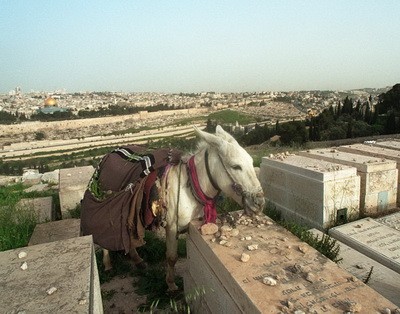
|
|
|

Reality And Vision
I was here, at the Hungarian Academy in Rome when Ivan Benda’s wonderful photos of Jerusalem were being unwrapped. I wanted to see every single one, from first to last. Now that I am recalling those moments, I think I was trying to find something unique in these pictures. I am still incapable of explaining with clarity what it was. It may have been the same thing that I had been trying to find in Jerusalem when I was there: the ancient habits, gestures and attitudes that continue to be seen in everyday life; the motionless reality of the olive trees, stones and churches; and as a matter of course, Jesus Christ in the face of those who live there.
If I were to sum up the characteristics of the photos exhibited here in two words, they would be reality and vision.
Many people are of the opinion that a photo is a simple and authentic impression of reality, which implies that a photographer’s only job is to spot the situations that for one reason or other, catch his attention and simply release the button. It might be true of a single photograph but not of a collection of selected pictures on display, which reveals a lot more than that. It reflects the artist’s perception of the world.
Ivan Benda’s interpretation appears to be closely related to what the poet, Attila József demanded of artists, whose main concern must be “ truth rather than what is real “. Instead of presenting the mere impression of reality, Ivan Benda’s photographs reveal something of his deeper self. They reveal that he aspires to achieve truth, peace, tranquillity, love and harmony. This is the message of his pictures. They try to open our eyes and show us how to look at the world; they cleanse and form us; they teach us about what is true and what is real, like the poet did once.
As a consequence, his artistic representation of reality is also a vision. A vision of a Jerusalem, where there is peace and the nations and religions can co-exist without divisions in mutual respect and love.
From now on, never again will I be able to read the last pages of the Bible with the Prophet’s lines on New Jerusalem without recalling the reality and vision that appear in Ivan Benda’s photographs of Jerusalem. This is how the Revelation to St. John describes New Jerusalem: / Rev. 21, 1-5a. 10-11 /
And I saw a new heaven and a new earth;
for the first heaven and the first earth passed away,
and there is no longer any sea.
2 And I saw the holy city, New Jerusalem,
coming down out of heaven from God, made ready
as a bride adorned for her husband.
3 And I heard a loud voice from the throne, saying,
“Behold, the tabernacle of God is among men,
and He shall dwell among them, and they shall be
His people, and God Himself shall be among them,
4 and He shall wipe away every tear from their eyes;
and there shall no longer be any death; there shall
no longer be any mourning, or crying, or pain;
the first things have passed away.”
5 And He who sits on the throne said, “ Behold, I am making
all things new. “ And He said, “ Write, for these words are
faithful and true. “
…
10 And He carried me away in the Spirit to a great and
high mountain, and showed me the holy city, Jerusalem,
coming down out of heaven from God,
11 having the glory of God. Her brilliance was like a
very costly stone of crystal-clear jasper.
For his achievement in bringing the world of both the heavenly and the earthly Jerusalem as well as reality and vision close to us, I, together with those present, want to thank Mr. Ivan Benda.
by Csaba Ternyák
